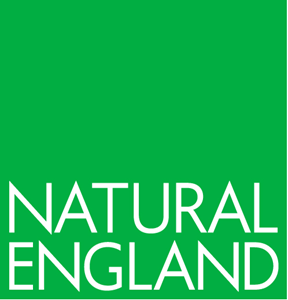Infographic for the Adults' People and Nature Survey for England - Year 3 - accessible version
Updated 5 July 2024
Applies to England
1. Headlines findings of the Adults’ People and Nature Survey for England
The accredited Official Statistics in this publication are based on continuous online data collection between the 1st of April 2022 and the 31st of March 2023.
1.1 Green spaces visited
-
65% of adults had visited a green and natural space in the last 14 days
-
22% of adults reported having not visited a natural space in the last 14 days
Urban green spaces (such as a park, field, or playground) were visited by five in ten people in the last month.
Percentage of adults visiting green and natural places:
-
33% Woodland or forest
-
32% Fields or farms
-
31% River, lake or canal
-
29% Beach, coastline or sea
-
20% Nature or wildlife reserve
-
19% Grounds of historic property or country park
-
12% Hill, mountain or moorland
-
8% Allotment or community garden
1.2 Travel to green and natural spaces
-
65% of people agreed that local green spaces were within easy walking distance
-
24% of people disagreed that local green spaces were within easy walking distance
Distance travelled to green and natural space:
-
41% of journeys to a natural space were less than one mile in travel distance
-
24% of journeys to a natural space were between one and two miles in distance
-
22% of journeys to a natural space were between three and ten miles in distance
-
12% of journeys to a natural space were more than ten miles in distance
1.3 Mode of travel
-
Active travel (on foot, by bike, or by mobility aid)
-
Passive travel (by car, van, motorbike or by public transport)
The most common mode of transportation for people traveling between two- and three-miles travel distance switched from mostly active travel to mostly passive travel.
-
92% of adults who travelled less than one mile to a natural space used active modes of transportation.
-
61% of adults who travelled between one and two miles to a natural space used active modes of transportation.
-
44% of adults who travelled between three and ten miles to a natural space used active modes of transportation.
-
14% of adults who travelled more than ten miles to a natural space used active modes of transportation.
1.4 Reasons for visiting green and natural space
-
56% of adults visited to get fresh air
-
51% of adults visited for physical exercise
-
36% of adults visited for mental health and wellbeing
-
29% of adults visited to walk a dog
-
28% of adults visited to connect with nature
1.5 Benefits of visiting green and natural space
For people who had visited a green and natural space in the last 14 days:
-
92% agreed that spending time outdoors was good for their physical health
-
91% agreed that spending time outdoors was good for their mental health
1.6 Barriers to visiting green and natural space
The most common reason cited for not spending free time outside in the last 14 days was bad/poor weather
-
36% cited bad weather
-
22% expressed being too busy at home
-
22% cited poor health
-
21% expressed being too busy with work/family commitments
-
6% cited Government restrictions or to stop coronavirus spreading
The top five concerns or worries about visiting green and natural spaces for people that had not visited green and natural spaces in the previous 14 days
-
24% cited visiting after dark
-
24% cited a lack of facilities
-
24% cited concerns about anti-social behaviour
-
17% cited a fear of crime
-
15% cited being alone or isolated
1.7 Quality of local natural spaces
More people thought the quality of local green and natural spaces had improved rather than reduced
-
42% perceived an improvement in the quality of local green and natural spaces
-
36% did not see a change in the quality of local green and natural spaces
-
22% perceived a reduction in the quality of local green and natural spaces
1.8 Protecting the Environment
People undertook a range of household, gardening, and broader lifestyle behaviours that are positive for the environment.
-
81% of people recycle
-
79% brought their own shopping bags
-
75% switched off appliances
-
46% composted food waste
-
43% took shorter showers to save water or energy
-
36% brought local produce, grown locally or in season
Most people ranked climate change, plastic pollution, and the decline or extinction of animal and plant life as the environmental issues they are most concerned about.
-
49% of people are concerned about climate change
-
41% of people are concerned about plastic pollution
-
40% of people are concerned about the decline or extinction of animal and plant life
-
33% of people are concerned about pollution of rivers, lakes, and ground water
-
32% of people are concerned about pollution of the sea
-
32% of people are concerned about building on green and natural spaces
-
31% of people are concerned about the growing amount of waste

